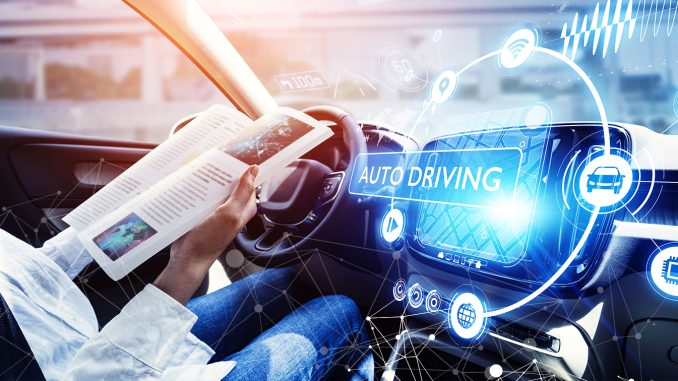
Introduction to Autonomous Vehicles and Insurance
The world of transportation is on the brink of a revolutionary transformation as autonomous vehicles (AVs) become more prevalent on our roads. These self-driving cars, equipped with advanced technology and artificial intelligence, are set to disrupt traditional modes of transportation and revolutionize the way we view auto insurance.
As AVs continue to evolve and gain popularity, it is essential for insurance companies to adapt their policies and approaches accordingly. The rise of autonomous vehicles presents both challenges and opportunities for insurers, requiring them to navigate uncharted territory in order to provide adequate coverage for this new era of mobility.
In this blog post, we will explore the impact of autonomous vehicles on insurance companies, delve into the future of auto insurance in the era of AVs, discuss key technologies shaping the industry, examine how insurance works for self-driving cars currently, and envision how these vehicles will be insured in the future. Join us as we uncover the fascinating intersection between technology and insurance in this rapidly changing landscape!
The Impact of Autonomous Vehicles on Insurance Companies
Autonomous vehicles (AVs) are set to revolutionize the way we travel, but they also have a significant impact on insurance companies. As these self-driving cars become more prevalent on our roads, traditional auto insurance models will need to evolve to accommodate the unique risks and challenges posed by this new technology.
One of the main impacts of AVs on insurance companies is the shift in liability. In a traditional car accident, it is typically easy to determine who is at fault. However, with autonomous vehicles, determining liability becomes more complex. The responsibility for accidents could fall on the vehicle manufacturer, software developer, or even the owner/passenger depending on the circumstances. This change in liability distribution will require insurers to adapt their policies and coverage options accordingly.
Another impact of AVs is the potential reduction in accidents and claims. With self-driving cars equipped with advanced sensors and algorithms that minimize human error, it is expected that accidents will significantly decrease over time. This means insurance companies may see a decline in premiums collected from traditional auto policies.
Moreover, AV technology introduces new risks that insurers must consider when developing coverage plans. Cybersecurity threats pose a particular concern as hackers could potentially manipulate an autonomous vehicle’s systems leading to accidents or thefts. Insurers will need to develop comprehensive cybersecurity provisions within their policies to mitigate these emerging risks.
Additionally, there may be a fundamental shift from individual car ownership towards shared mobility services offered by ride-hailing platforms or manufacturers themselves. This trend could lead insurers to transition from insuring individual drivers towards providing coverage for fleet operators or mobility service providers instead.
The Future of Auto Insurance in the Era of Autonomous Vehicles
The future of auto insurance is undergoing a dramatic transformation with the rise of autonomous vehicles. As self-driving cars become more prevalent on our roads, traditional insurance models will need to evolve to meet the unique challenges and opportunities posed by this technology.
One key aspect that will shape the future of auto insurance in the era of autonomous vehicles is the different levels of autonomy that these vehicles can achieve. There are six types of autonomous vehicle capabilities, ranging from Level 0 (no automation) to Level 5 (full automation). Each level presents its own set of risks and liabilities, which insurers will need to account for when developing new policies.
In addition to varying levels of autonomy, three emerging technologies are shaping the future landscape of mobility: artificial intelligence (AI), connectivity, and electric powertrains. AI plays a crucial role in enabling self-driving cars to analyze data and make decisions in real-time. Connectivity allows vehicles to communicate with each other and infrastructure, enhancing safety and efficiency. Electric powertrains reduce emissions and offer potential cost savings for both drivers and insurers.
These technological advancements bring about three major trends disrupting auto insurance: usage-based pricing, product liability shifts, and data-driven underwriting. Usage-based pricing enables insurers to personalize premiums based on individual driving behavior rather than general demographics or historical claims data. Product liability shifts occur as responsibility for accidents may shift from drivers to manufacturers or software providers in fully automated systems. Data-driven underwriting utilizes telematics devices installed in vehicles that collect valuable data on driving habits, allowing insurers to price policies more accurately.
As we look ahead into the future, it becomes clear that how insurance works for self-driving cars will require significant changes compared to traditional coverage models. The introduction of autonomous features raises questions such as who is responsible when an accident occurs? Is it still the driver’s fault or does blame fall on faulty technology? These uncertainties call for innovative solutions within the industry.
Insuring self-driving cars in the future may involve a combination of traditional coverage, product liability insurance, and specialized coverage for autonomous systems. Additionally, as more cars become fully autonomous, the need for individual auto insurance may decrease, and fleet insurance could become more prevalent.
In conclusion, the future of auto insurance in the era of autonomous vehicles is one that will require adaptation and innovation from both insurers and policymakers. It will be crucial for all stakeholders to work together to develop new policies and regulations that address the unique risks and opportunities presented by self-driving cars. With careful planning and collaboration, we can ensure a smooth transition to this exciting new era of mobility.